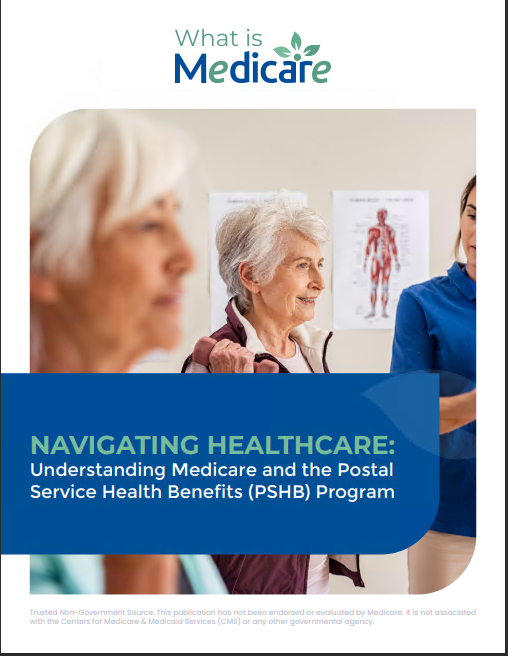Key Takeaways
-
Many valuable Medicare resources in 2025 are not well-known but can help you manage costs, benefits, and coverage decisions more effectively.
-
Understanding what’s available beyond your basic plan could save you time, money, and confusion throughout the year.
What You Don’t Know Can Hurt You
Most people are familiar with the basic parts of Medicare: Part A for hospital insurance, Part B for medical insurance, Part D for drug coverage, and optional Advantage plans. But there’s much more behind the curtain—especially in 2025. New tools, assistance programs, and informational services are now available, yet remain largely underused simply because you may not know they exist.
If you’ve ever felt overwhelmed trying to sort through your Medicare choices or wondered whether you’re getting the most out of your coverage, these lesser-known resources can help provide clarity, support, and in some cases, direct financial assistance.
1. State Health Insurance Assistance Programs (SHIPs)
Every state has a SHIP, and in 2025, these programs are more active than ever. SHIPs offer personalized, one-on-one counseling and assistance at no cost to you.
What They Can Help With:
-
Reviewing your Medicare coverage and suggesting alternatives
-
Comparing Part D drug plans
-
Understanding enrollment periods
-
Explaining Medicare rights and protections
SHIP counselors are trained, unbiased, and not affiliated with private insurers. You can often schedule a phone or in-person meeting through your state’s department of aging or health services.
2. Medicare Plan Finder Tool—Now with Improved Features
The Medicare Plan Finder tool has been enhanced for 2025 with a more user-friendly layout, clearer cost breakdowns, and real-time plan comparisons. It’s hosted on the official Medicare website and allows you to evaluate different plans side by side.
Features Worth Using:
-
Estimated annual drug costs based on your prescriptions
-
Star ratings for plan quality and member satisfaction
-
Filters for special needs plans or preferred pharmacies
While the tool doesn’t tell you what to choose, it empowers you with the data you need to make informed decisions.
3. 1-800-MEDICARE Support Line
It might seem basic, but the 1-800-MEDICARE helpline has expanded its offerings in 2025 to include:
-
Multilingual support for over 25 languages
-
Expanded hours, including weekends and holidays
-
A callback option to reduce wait times
You can ask for printed materials, request plan information by mail, or even get clarification on your Medicare Summary Notice.
4. Medicare & You Handbook (Digital Edition)
The 2025 edition of the “Medicare & You” handbook is now available in multiple digital formats. It includes interactive features when viewed online, such as embedded videos, search tools, and calculators.
Why You Should Use It:
-
It’s updated annually with changes in coverage rules
-
It’s organized by topic for easier navigation
-
Sections are now tailored for new enrollees, current beneficiaries, and caregivers
5. Low-Income Subsidy (LIS) Program Updates
Also known as “Extra Help,” the LIS program helps pay for Part D premiums, deductibles, and copayments. In 2025, the income and resource limits have been adjusted to allow more people to qualify.
What’s New:
-
Simpler application process via Social Security
-
Fewer documentation requirements
-
Automatic enrollment for certain Medicaid beneficiaries
Even if you didn’t qualify last year, check again. Updated thresholds mean you might now be eligible.
6. Medicare Savings Programs (MSPs)
These state-run programs help pay your Part B premium and sometimes your Part A premium, deductibles, and coinsurance.
There Are Four Tiers in 2025:
-
Qualified Medicare Beneficiary (QMB)
-
Specified Low-Income Medicare Beneficiary (SLMB)
-
Qualifying Individual (QI)
-
Qualified Disabled and Working Individual (QDWI)
Each has different income and asset limits. Like LIS, many people assume they don’t qualify when in fact they do. Apply through your state’s Medicaid office.
7. Medicare Beneficiary Ombudsman
Few people are aware this role even exists. The Medicare Ombudsman serves as your advocate if you experience problems with Medicare coverage, payments, or denials.
Common Issues They Can Address:
-
Incorrect billing
-
Delayed services or claims
-
Appeals for denied services
You can reach out via a written complaint or through the 1-800-MEDICARE line. The Ombudsman will not resolve disputes with private plans but can guide you on your rights.
8. MyMedicare.gov Personalized Dashboard
Your Medicare account portal, MyMedicare.gov, has new features in 2025 that offer a more detailed overview of your health usage and claims.
Dashboard Tools Include:
-
A timeline of your past services
-
Annual wellness visit reminders
-
Drug cost tracking
This digital hub keeps all your Medicare data in one place, making it easier to prepare for appointments or review billing history.
9. Care Compare Tool
Medicare’s Care Compare tool helps you evaluate providers and facilities in your area. In 2025, it’s been upgraded with new quality indicators and more consumer-friendly filters.
You Can Use It To:
-
Find top-rated hospitals, nursing homes, and home health services
-
Compare Medicare-certified doctors
-
Review performance metrics and patient satisfaction scores
Use this tool especially when considering a new provider, switching facilities, or after a major medical event.
10. Senior Medicare Patrol (SMP)
In 2025, fraud prevention is a high priority. SMPs train volunteers to educate and assist Medicare beneficiaries in identifying and reporting fraud.
Why You Should Pay Attention:
-
Fraud can lead to higher premiums and fewer benefits for everyone
-
Common fraud types include billing for services not provided or duplicate charges
SMPs offer fraud workshops, personalized assistance, and clear reporting paths. Contact your local SMP through your state health department.
11. Virtual Medicare Webinars and Live Q&As
Many organizations are now offering regular online events to educate beneficiaries. These are typically free and include live Q&A sessions.
Topics Usually Covered:
-
Enrollment changes
-
Updates to benefits and costs
-
Coordination with other coverage like Medicaid or retiree plans
Check schedules on your state SHIP website, the Medicare.gov events page, or local aging services.
12. Medicaid-Medicare Dual Eligibility Tools
For those who qualify for both Medicare and Medicaid, coordination can be tricky. Thankfully, dual eligibility resources are now better integrated.
2025 Updates Include:
-
Shared portals between Medicaid and Medicare databases
-
Fewer paperwork redundancies
-
Clearer guidance on managed care plan options
If you’re dual-eligible, use these tools to ensure you’re not overpaying or missing out on services.
Why These Tools Matter More Than Ever in 2025
Healthcare in 2025 continues to evolve—both in complexity and accessibility. While base Medicare coverage hasn’t changed drastically, how you interact with it has. Digital access, program expansions, and updated eligibility thresholds mean it’s easier than ever to get personalized support—if you know where to look.
Whether you’re a new enrollee or a long-time beneficiary, these tools and resources can enhance your Medicare experience, reduce frustration, and ensure you’re getting all the benefits you deserve.
Take Full Advantage of What Medicare Offers
Most of these resources cost nothing but offer tremendous value. You don’t need to navigate Medicare alone. Use these tools to become a more informed, confident participant in your own healthcare.
If you need help choosing the right tools or programs for your situation, get in touch with a licensed agent listed on this website for professional advice tailored to your needs.





